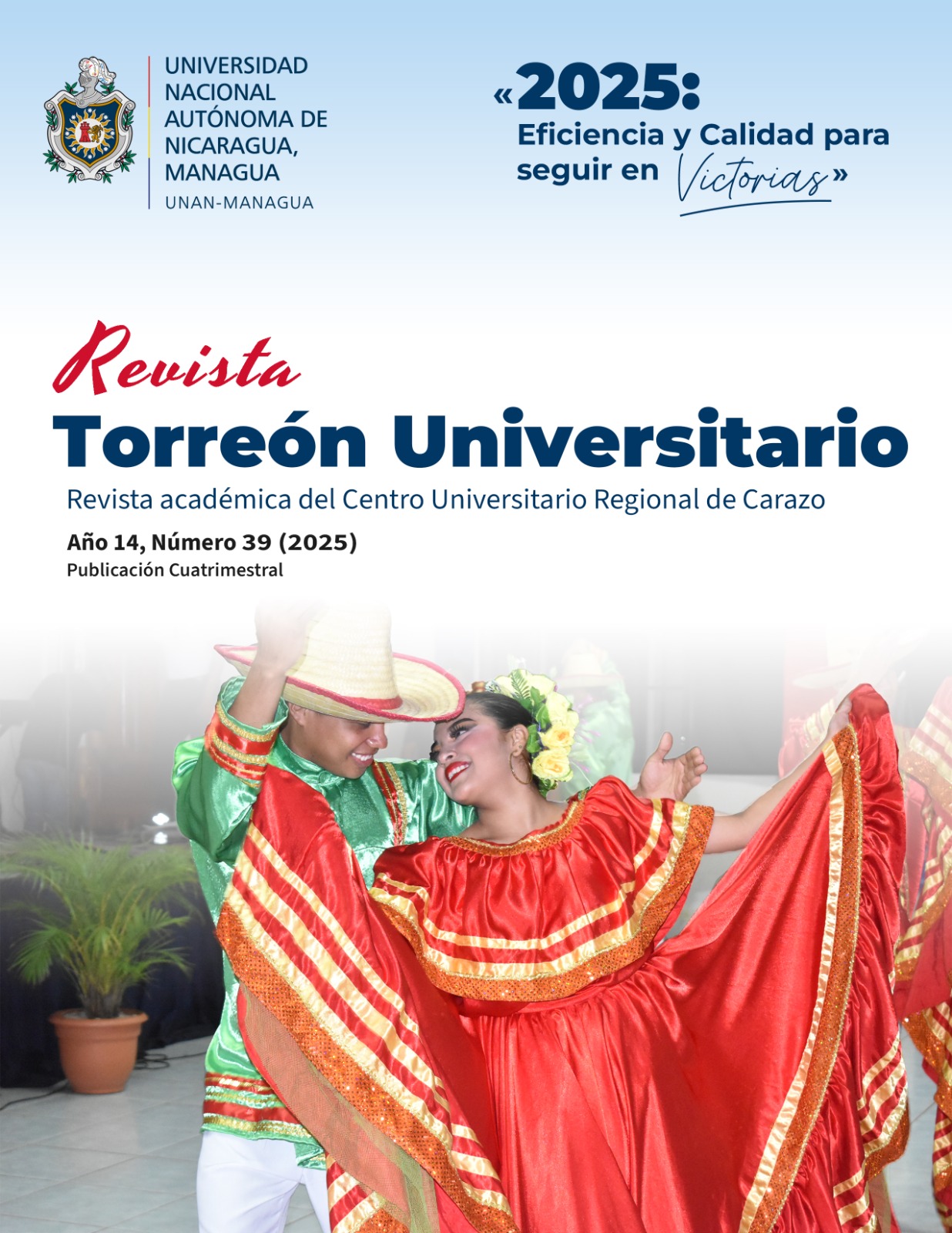Didactic strategy Illustrations as a contribution to the understanding of the topic value chains in the industrial engineering major of the UNAN-FAREM-Carazo
DOI:
https://doi.org/10.5377/rtu.v14i39.20141Keywords:
Didactics, teaching-learning strategy, illustrations, reading comprehension, value chainsAbstract
A study was conducted at the Universidad Nacional Autónoma de Nicaragua, Facultad Regional Multidisciplinaria de Carazo, to evaluate illustrations as a didactic strategy for reading comprehension of written documents provided by teachers during classes given at the UNAN-Managua, FAREM-Carazo, this is a descriptive, transversal, The information was contrasted with the main theories on reading comprehension and didactic strategies, to make a correct triangulation of the information collected, revealing that there is no general procedure or methodology used by teachers in its application. Likewise, during the execution of the subject "value chains" in the first year of the industrial engineering course in 2018, an opinion test and an evaluation rubric were applied to the students, which allowed an analysis of the different data collected, making use of frequency quantification utilizing bar graphs. When analyzing the importance of the illustrations strategy in the value chain topic, it was determined that students have a good level of acceptance of the illustrations in written documents and there is an improvement in their reading comprehension when they are used as a didactic strategy since they allow greater accessibility of the contents, increase the retention capacity of the concepts and there is an improvement in their synthesis capacity.
Downloads
References
Arias, F. G. (2006). El proyecto de investigacion: Introduccion a la metodologia cientifica.
Barriga, F. D. (1999). Estartegias docentes para un aprendizaje significativo. Mexico: McGraw Hill.
Beraza, M. A. (2004). Guía para la planificación didactica. España.
Burgardt, A. G. (2004). El aporte de Max Weber a la constitución del paradigma interpretativo en ciencias sociales. Buenos Aires: Universidad de Buenos Aires.
Coll, C. (1992). Didactica de los procedimientos. Aula de innovacion Educativa.
Echavarria, R. B. (2002). Investigacion un camino al conocimiento.
Gascón, A. d. (s.f.). Didáctica universitaria. España.
Grisolía, M. (2010). ¿Qué es un recurso didáctico? Mexico.
Lara, J. R. (2016). Maestría en Metodología y Didáctica para la Educación Superior . Jinotepe.
Martin, A. S. (1991). La organización escolar.( En Cuadernos de Pedagogía).
Parra, D. M. (2003). Estrategias de enseñanza aprendizaje.
Perales, J., & Jimenez, J. d. (2002). Las ilustraciones en la enseñanza- aprendizaje de las ciencias , analisis de libros de textos.
Porter, M. (2002). Ventaja competitiva. Argentina.
Prieto, J. H. (2012). Estrategias de enseñanza aprendizaje. Mexico: PEARSON.
Salvador, U. R. (2015). Mejoramiento de la compresion lectora en los estudiantes de decimo grado.
Sampieri, R. H. (2014). Metodologia de la Investigacion.
Santiago Castillo, L. P. (2005). Enseña a estudiar…aprende a aprender.
Sole, I. (1998). Estrategias de lectura .
Sole, L. (1992). Estrategia de lectura. Barcelona.
UNAN-Managua. (2011). Modelo Educativo, Normativa y Metodología 2011. Managua.
Zambrana, L. M. (2015). Analisis de las estrategias metodologicas utilizadas por los docentes en el desarrollo de la compresion lectora.
Zuñiga, M. (2008). el desarrollo de la comprensión lectora, en la lectura de estudio, mediante el aprendizaje de mapas conceptuales con un grupo de estudiantes de primer año de la carrera de derecho.
Downloads
Published
Issue
Section
License
Copyright (c) 2025 National Autonomous University of Nicaragua, Managua

This work is licensed under a Creative Commons Attribution-NonCommercial-NoDerivatives 4.0 International License.
The authors who publish in this journal agree to the following terms.
- The author or authors of the articles, essays or research grant the National Autonomous University of Nicaragua, Managua (UNAN-Managua) the editing rights (copyright) of the submitted work, therefore the University has the exclusive right to publish the article for the entire copyright period.
- These copyrights/authors authorize Torreón Universitario Magazine and the University to edit and disseminate/publish the article in said Magazine, including printed and electronic reproduction, storage, retrieval and any other type of publication, and sources of secondary information as services. of summaries and databases, they also empower it to protect the article against unauthorized use for dissemination by printed or electronic media (PDF, HTML, EPUB, XML or others).
License for use of content
The magazine uses the Creative Commons Attribution-NonCommercial-NoDerivs 4.0 International License.
Under this statement:

This journal is licensed under a Creative Commons Attribution-NonCommercial-NoDerivatives 4.0 International License. It can be copied, distributed and transmitted publicly as long as the author and source are cited (Revista Torreón Universitario), it should not be modified or used for any commercial purpose. The full license can be found at http://creativecommons.org/licenses/by-nc-nd/4.0/.



